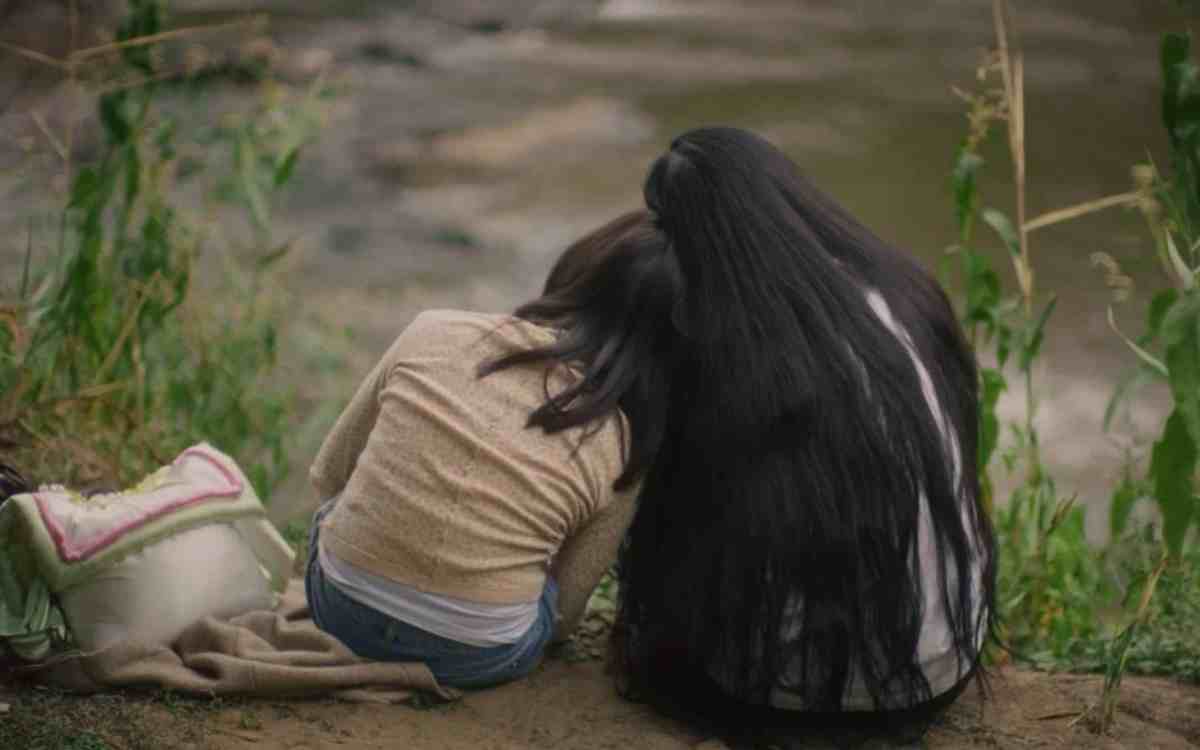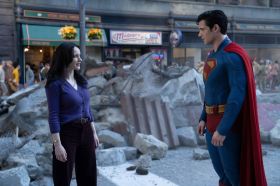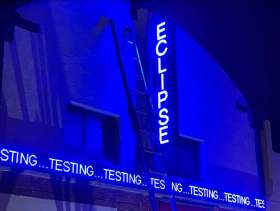Commissioned by Taungurung curator Kate ten Buuren, The Sun Sets and Once Again the Earth is Upright is an expansive yet intimate story of grief and loss, depicting the porous relationship between time and space. The film is one of five new works in the series Now You’re Speakin’ My Language, a digital exhibition co-presented with the Institute of Modern Art and NOWNESS Asia. All of these new video works explore ties between language and land through memory, migration and intergenerational knowledge from First Nations, Southeast Asian and Asia Pacific artists.
Writer and filmmaker Chi Tran says, ‘I think I wanted to write something about grief and the afterlife because those are themes I often think about, and that I’ve already explored in my past work.’ Some of Tran’s previous video works include Time after Time for BLINDSIDE Gallery, There is Nothing Else Known in the Sky that Does That for Liminal magazine and If Heaven is Temporary for Runway Journal. Her short films have an uncanny ability to depict the elasticity of time, building slow and resonant rhythms. Time is viscous and capable of thickening attention as a form of prayer.
After cold messaging her lead actress, Karina Utomo, on Instagram about the project, they began talking about grief and organically became co-writers. Tran says, ‘A lot of the story is written from conversations between Karina and myself. I very much feel that the film doesn’t really belong to me, but to everyone who helped me with the work, especially Karina. Her presence in pre-production and her performance, especially as a first-time actor, continues to affect me.’
Read: Birdeater, Audrey and The Moogai to premiere at SXSW in Texas this year
The project also involved Tran’s cousin’s daughter, Alexa Le Maniphonh, who plays a young girl the protagonist meets by the river. ‘Alexa was quite shy at first but, by the end of the shoot, she was so confident. She was improvising so many of her lines and I kept some of them in the movie.’
Tran admits she ‘finds it difficult writing scripts’. She explains, ‘I didn’t go to film school, so I think my approach to making this work was a bit haphazard and particular, which I am OK with. I knew what I wanted each shot to look like and I knew at which particular points I wanted conversation or quiet, and talked it out with [director of photography] Tavis [Pinnington]. Some of the dialogue was improvised and some of it I gave to the actors on the spot or the day before.’
This stylistic choice of prioritising natural performance comes from Tran’s love for ‘films that don’t feel heavily fabricated’. Wanting to avoid art that feels didactic and contrived, she says, ‘My goal is to make films that feel real and like real people that you would talk to.’
What is most palpable in The Sun Sets and Once Again the Earth is Upright is its acute authenticity. One scene in particular features Utomo crying in a car alone and the audience is made to feel they are witnessing, even intruding, on a very vulnerable moment. Tran says, ‘Editing that scene was tough. I was nervous about how much of it to keep in; it felt like a very delicate balance.’
She continues, ‘The original cut was so much longer and I made it as short as I could.’
Although Tran chose to shorten the work in the editing process, her films often feel durational in a way that enables the accumulation of something intangible and imperceptible to gently pass. Her affinity with slow cinema stems from her interest in ‘movies that show you the minutiae or little gestures and moments that seem not really important, but actually say so much about a person’.
She continues, ‘Waiting, sitting, thinking – we do it all the time. Sometimes I like it when things on screen unfold at a pace similar to real time.’
At the beginning of the film, we see Meilani (Utomo) sitting and waiting at the edge of the river, before being joined by a stranger (Le Maniphonh). This remarkably unsettling asymmetry between two bodies conjures a strange sense that they are walking alongside one another while inhabiting different temporalities, perhaps different versions of the same person – past and future selves co-existing on the same plane. Shared between separate bodies, time inordinately passes between them. When showing a rough cut of this scene to her friend, they asked if the stranger was a real person, a projection or a spirit?
Tran also speaks about the serendipity of otherworldly encounters with strangers. ‘Those moments that feel semi-magical that happen with people you don’t really know, they often sit with me for a long time.’
There is something about defamiliarisation that changes the texture of the everyday, compelling you to interact with the world in a different register. When strangers confide or share an encounter, this kind of accelerated intimacy suspends time, creating unexpected synchronicities.
One of these strange coincidences happened before production began. Tran’s family are locals to Eltham and her father helped her scout locations in the area. The river they chose happened to also be a place Utomo frequently visits as part of her daily routine. When Tran proposed the idea to Utomo, she admitted it was part of the reason she agreed to join the project. Trans says, ‘A lot of the details I already wanted in the film already rang true to her real life. I think that was just coincidence and it felt a bit like providence to have met in this way, with the opportunity to work together.’
Another stranger Meilani meets in the film is Nigel Yang from HTRK, who gives her a lift so that she can reach home before the sun sets. This scene, which closes the film, calls to mind Abbas Kiarostami’s Taste of Cherry, in atmosphere and in shot set-up.
Read: A director’s secret letter to his mother
Tran accredits a lot of the film’s impact to its collaborative nature. She says, ‘Making this film marked a lot of firsts for me… It feels like a very shared work with everyone that worked on it, especially Karina.’ She adds, ‘Writing is very lonely and, for me, I find that very difficult and challenging. I don’t really see it as mine and I prefer not to see it like that.’
Tran also shares her research-based approach, ‘I enjoy reading non-fiction and sometimes theory for the content as well as the style. I think that informs my writing style and how I approach writing worlds and characters and their dialogue. Research can also just be interviewing people, talking to people about their lives, asking them lots of questions.’
Her journey as an emerging filmmaker comes out of her background as a writer and artist. Tran’s first chapbook, i occupy space, which is to say, i am always grieving was published by Incendium Radical Library as part of a residency in 2016. Tran’s resistance when it comes to conforming to the conventions of a single genre amalgamates her recurring interest in physics, faith, memory and phenomenology. She says, ‘I’ve always wanted to do film since I was very young; I just never had the courage to pursue it. I studied writing instead and I am grateful for that. I’ve come to realise how much of the film is writing. Writing not just as words on a page, but ideas and what you want your story to be about and what you choose to focus on.
‘I don’t know if I ever felt prepared to eventually start making films; I kind of just jumped into it, with encouragement from people around me, who knew my deep connection to it. But I do think my writing practice has taught me to ask myself the right questions when I’m making something, to really reflect on what I’m trying to say and be patient with figuring out how I will say it.’
As she said during her 2019 lecture at the Australian Centre for Contemporary Art (ACCA) co-presented with Writing + Concepts Lecture Series, ‘I do not believe in the practice of writing as an answer, but rather as an undying mode of enquiry.’
Similarly, her films do not comply with neat or simple categorisation. Instead they are slippery and amorphous, with more questions than answers, positing an infinite visual grammar that generously brims with gestures towards the ineffable.
This article is published under the Amplify Collective, an initiative supported by The Walkley Foundation and made possible through funding from the Meta Australian News Fund.





